The Visual Guide to
Ovine Reproduction
Estrus Detection: Estrus Detection Aids
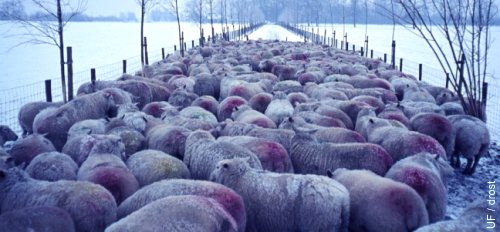
Estrus Detection.
Several ewes in this flock were in estrus and were marked by a teaser ram as indicated by the red marks on the rumps. It is just as important to identify those ewes that were not marked because they did not come into estrus.
Utrecht (1976)
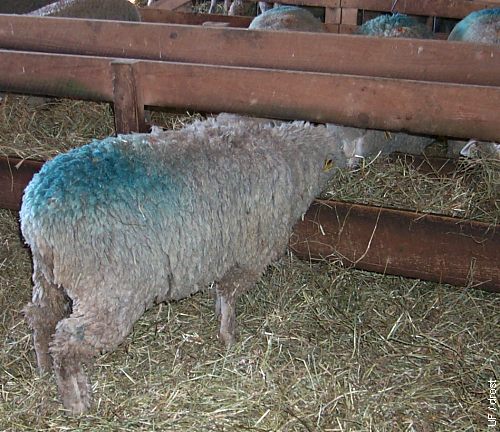
Ewe in Estrus.
This ewe was marked by the ram when she was recently in estrus.
Smith MC (2006)
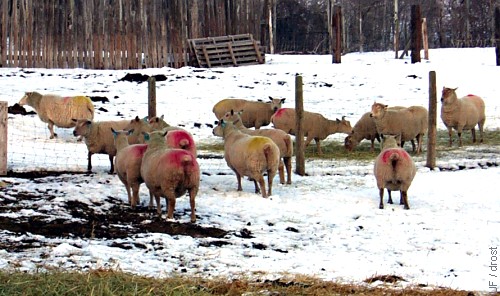
Marked Ewes.
The color on the marking ram should be changed every 10 to 15 days. Older yellow marks are still present along with the fresh red marks.
Smith MC (2006)
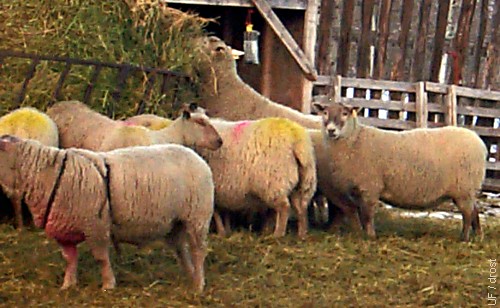
Ram with Marking Harness.
Double checking. Current color of the crayon in the marking harness is red.
Smith MC (2006)
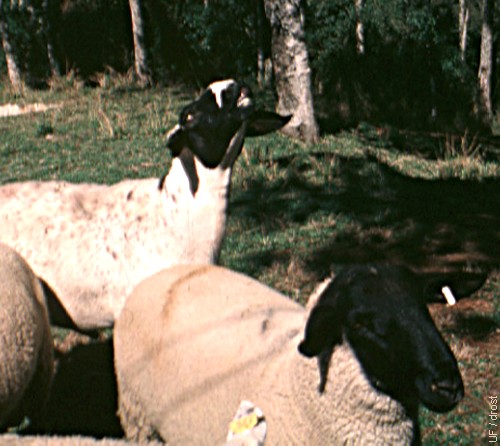
Flehmen Response.
Pheromones in the vaginal mucus of the ewe in estrus can be picked up by the vomeronasal organ of the ram as he sniffs the ewes.
Smith MC (2006)
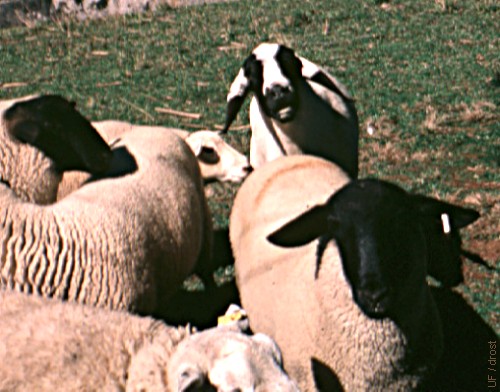
Ram Follows Ewes.
Rams follow ewes to check them for pheromones and other signs of estrus such as willingness to stand to be mounted.
Smith MC (2006)
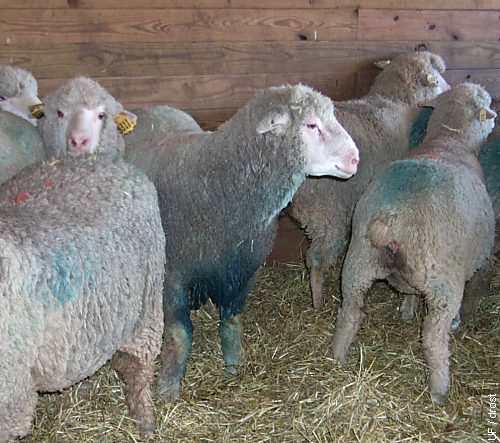
Use of Grease Paint.
While the current color is blue, colors can be changed on the ram to detect new activity.
Smith MC (2006)
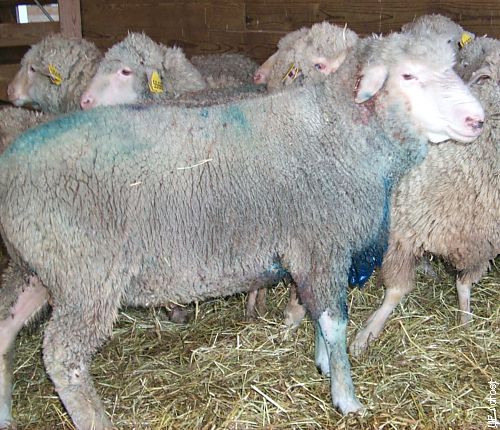
Grease Paint on Brisket.
Pigmented grease is applied liberally and directly to the wool of the brisket of the ram.
Smith MC (2006)

Marking Colors.
Ordinary nontoxic grease can be used and mixed with different pigments from the hobby store.
Smith MC (2006)
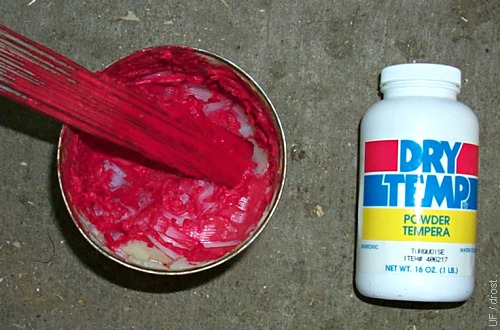
Mixing Pigment and Grease.
Pigment can be mixed directly into the grease can or in a cup.
Smith MC (2006)
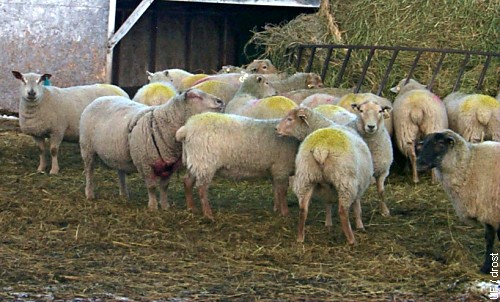
Estrous Activity.
Several ewes were detected in estrus previously when the ram was wearing a marking harness with yellow paint. He is now wearing a harness with red paint.
Smith MC (2006)
